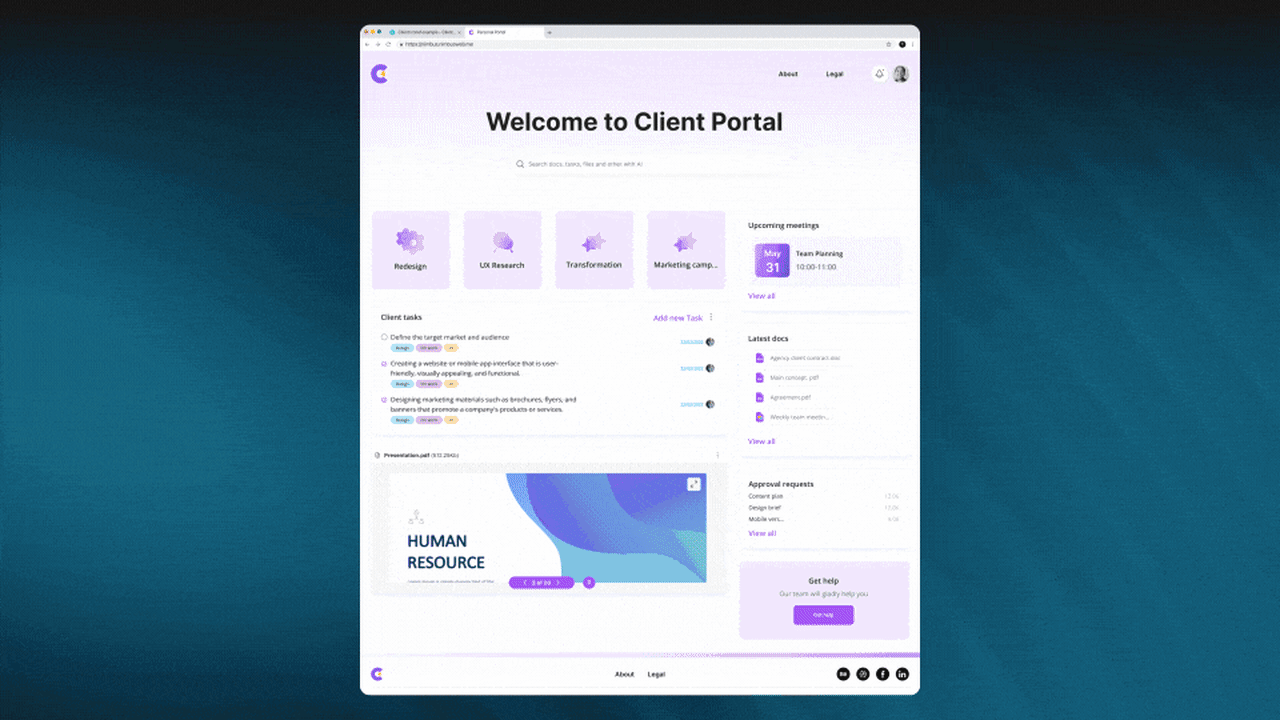With big data technology’s slow but gradual arrival and ever-evolving work process technologies, new elements have been brought into supply chain processes. At its core level, supply chain functionality was profoundly changed by linked devices and IoT; consequently, digital supply chain transformation has spread throughout procurement, warehousing, and finance operations alike. According to Gartner findings, supply chain processes implementing digital technologies saw 20% revenue gains while experiencing 50% decreases in process expenses.
This article investigates supply chain digital transformation, its definition, real-life usage examples, and related challenges and solutions. We hope to equip you with all the knowledge required for effective digital transformation within supply chains.
What is digital transformation in supply chain management?

Logistics and digital supply chain management must become the core focus of your business to flourish efficiently and increase revenue while building customer loyalty. What steps must be taken? Let’s get to work by understanding the true worth of digital transformation in relation to supply chain processes.
Digital transformation requires organizations to integrate digital technologies in all operations and deliver value to customers while being flexible enough to explore untested concepts.
Digital transformation goes far beyond installing new digital technologies; it also involves using them to reinvent how your organization operates and delivers value to its customers. Digital supply chain transformation boosts efficiency while offering numerous other advantages – among these are:
- Cost optimization. Supply chain transformation offers immediate cost reduction and optimization benefits to businesses of any kind, as its increased efficiencies help maximize resource use more efficiently – directly impacting costs. Automating tasks saves time and costs by eliminating repetition or duplication, while monitoring processes ensure that errors do not arise due to manual efforts. Predictive responses allow more agility, resulting in savings overall.
- Talented employees. Remote working is an increasingly popular trend that highlights the advantages of digital technologies. Digital supply chain businesses that embrace it can provide their employees with secure data access at any time or location, collaboration tools enable remote collaboration; and they can recruit highly skilled supply chain leaders globally.
- Customers are more satisfied with the service. Your competitive edge and client relationship will increase dramatically by allowing customers to track their orders, providing top-of-the-line products, and guaranteeing they arrive as scheduled.
- Routine flow automation. Digital supply chains can reduce the amount of SC paperwork, which previously took up much time. In real-time, entrepreneurs have access to all the data they need thanks to IoT sensor devices.
- Better visibility. Manufacturers and clients both benefit from this feature of supply chain intelligence software. Businesses can quickly detect problems with suppliers by gathering more data about performance; furthermore, companies can more accurately interpret consumer needs to enhance customer service delivery.
Digital supply chain planning presents one of today’s most significant technological and managerial challenges. Traditional supply chains rely heavily on data-intensive processes that could benefit from new technologies; digitalization aims to improve customer experiences via improved communications, inventory visibility, and other methods.
The main goal of improving the entire supply chain ecosystem is to expedite customer orders while cutting costs for all involved (manufacturers/suppliers).
Real-life use cases of supply chain digital transformation
As part of their competitive strategy, many global companies have implemented digital tools into their supply chains to stay ahead of competitors and maintain an edge. Here are several notable instances of digitizing supply chains:
1. Unified platforms
Digital transformations often entail supply chain technologies that help integrate disparate applications or upgrade outdated systems into one cohesive supply chain platform, providing greater visibility throughout inventory management and distribution processes, thus eliminating bottlenecks and increasing efficiency across various tasks.
Digital solutions exist that can enhance supply chain operations at work. Your company will benefit from using these platforms since they can quickly increase the productivity of your supply chain department. You can use cloud document-sharing software for its mobile capabilities or automation features that promote efficiency or use Vendor Managed Inventory (VMI) solutions to have better insight into product movement between stores and suppliers. All these digital supply chain technologies make supply chain planning a breeze by giving your company more significant insights into forecasting capabilities to maintain optimal stock levels for managers.
2. Demand planning and predictive analytics
It’s no secret that by using machine learning, digital technology analytics companies can improve multiple processes in their supply network. It doesn’t just help better anticipate market fluctuations; it allows businesses to simply enhance the accuracy of their demand forecasts and, at the same time, minimize supply chain disruption.
3. AI and automation
Digital transformation in global supply chains is only possible with advanced technologies like automation. This digital technology simplifies supply chain planning by letting people focus on crucial tasks while it takes care of automated operations and decreases human error risk.
AI and automated tools offer supply chain professionals invaluable assistance with various administrative duties: forecasting trends when purchasing, tracking product movement, and collecting invoice data accurately for precise purchases.
Artificial Intelligence technology empowers businesses to conduct in-depth data analyses without human input, leading them to make more informed decisions and provide tailored client services. Furthermore, AI tools contain natural language processing features that facilitate direct interactions between AIs and clients.
4. Data analytics
Data analytics form the backbone of digital transformation, helping assess current and future trends; data analytics also allow businesses to remain agile by gathering customer demand data and supply chain disruptions or delays within operations, giving us greater chances for timely responses if required.
Supply chain managers can utilize sophisticated tools and software for real-time data access and keep an eye out for changes to supplier activity, disruptions, or shipment status changes that arise at any given moment.
Your organization can leverage data analysis to maximize operations. Visual dashboards make information readily available so decisions can be made more rapidly; automated software and other tools may further streamline decision-making processes as well.
5. Supply chain visibility with Blockchain

Blockchain technology holds great promise to create more transparent, accountable supply chains for businesses to utilize, making monitoring easier while guaranteeing they come from companies dedicated to ethics, environmental protection, and sustainable practices.
6. Enhanced customer service ability
Businesses have had to adjust their sales and distribution strategies in response to changing consumer behaviors, with modern consumers demanding rapid deliveries via supply chains, as this requires swift action by all departments, including logistics and fulfillment, in order to retain customers quickly while meeting expectations promptly and reliably.
Organizations are making the necessary adjustments by shifting towards direct-to-consumer sales models while taking cues from retailers’ strategies for strengthening digital customer support capabilities.
Implementation of this strategy includes setting up online stores and ordering forms to increase remote customer communication and ordering capabilities. Businesses may utilize virtual reality technologies to demonstrate products/services, conduct tours of facilities, or even conduct presentations about themselves remotely.
Key components of supply chain digital transformation
Cloud computing
Cloud computing can transform supply chains in many ways. Cloud-based collaboration software enables supply chain stakeholders and partners to communicate more rapidly, collaborate more efficiently in real-time, and respond faster and more quickly to evolving market requirements or customer desires.
Cloud computing enables companies to carry out efficiently and plan supply chain execution more effectively. Through cloud-based tools, organizations have access to real-time information regarding all parts of their supply chains, which allows for enhanced demand forecasting, inventory levels management, and changes in demand/supply planning.
Internet of Things (IoT)
Internet of Things technology is increasingly being deployed in various ways for supply chain transformation purposes. IoT sensors enable real-time tracking and visibility as products move throughout supply chains; businesses using IoT sensors gain real-time information regarding product location, status, and condition to help optimize logistics strategies and transportation plans.
IoT technology can also aid inventory data accuracy and timeliness by quickly gathering accurate inventory information with devices like RFID tags or barcode readers that collect real-time updates of inventory counts.
Artificial Intelligence
Artificial Intelligence can transform the digital supply chain in many ways. AI can assist managers with streamlining processes for demand planning, inventory levels, and logistics operations with less manual intervention, ultimately providing more responsive management decisions and flexible supply chains.
AI technology assists businesses in improving the accuracy, timeliness, and reliability of supply chains by using artificial intelligence tools such as Natural Language Understanding or Semantic Analysis for extracting pertinent information from multiple sources – sensor data or customer feedback being two examples where companies might utilize this type of AI customer support software.
Data analytics
Complex supply chains are currently experiencing rapid disruption. And since most businesses now need to react rapidly to changing customer demands before they fluctuate, it’s better to turn to advanced technologies like computer learning and predictive models.
Did you know that your company’s supply chain’s performance also depends on data analytics, as it’s one of the indispensable elements of transportation and logistics processes? When tracking product movement through the supply chain, the database you get can reveal many inefficiencies. And once you analyze that data, go through supply chain digitization, and optimize routes, you will see that transportation costs are decreasing.
Machine Learning
Besides being an invaluable asset for detecting bottlenecks in logistics, machine learning is one of the critical components of supply chain transformation because it can prove its worth in various areas.
We can rely heavily on computers because they have one massive advantage over people – they don’t get tired and make no mistakes. When companies use machine learning during supply chain transformations, they know it’s safe to rely on it. ML can help with everything – from improving demand planning accuracy and efficiency to predicting supply and demand pattern shifts. Besides that, machine learning algorithms can adapt to supply chain processes’ difficulties and make changes along the way.
Challenges in supply chain digital transformation

- Failure to create an effective change management strategy. One essential part of supply chain transformations lies in developing an effective change management plan; your supply chain’s success relies on keeping issues top-of-mind during planning sessions and taking personal responsibility to find creative ways of solving any potential obstacles.
- Wrong use of tools and systems. Companies undertaking digital supply chain transformation initiatives often neglect to provide employees with adequate training on the new systems and software necessary for implementation, even though many were designed with user-friendliness in mind. There will still be an initial learning curve associated with any new implementation, and your company must feel comfortable using any unfamiliar technologies or systems, comprehend their applications, and see the value in adopting them. Experience with global organizations has shown that legacy tools and systems often remain used because people view them as more efficient over time, especially since many organizations need more training on new systems to maximize their efficiency.
- External disruptions. Do not become distracted by digital transformation hype: always focus on its purpose – minimizing disruptions – before diving in. Your customers’ needs are always changing. Also, stressors like pandemics, political uncertainty, port block congestion, and others will continue to change. The perspective shifts quickly for any company as external challenges become the priority.
- A loose company culture. Your supply chain transformation will be negatively affected by a loose culture. Supply chain leaders often spend too much energy, time, and money on technology and must integrate this change into the organization’s culture. The latest technologies will always give you a competitive advantage, but keep sight of the people who remain at your company’s core. Your transformation is likely to fail if you don’t make it a top priority from the start. Your employees could become confused and disgruntled as a result.
Solution for supply chain digital transformation
Supply chain digital transformation may be exactly what your business needs to meet current and emerging challenges more easily while opening doors to future ones. Therefore, there should be no debate about starting this transformation process; instead, the only question should be how best to implement it.
FuseBase (formerly Nimbus) can provide businesses with an effective companion for their digital transformation journey and is one of the premier solutions available within its class.
Why FuseBase?

FuseBase can give your company everything it needs to address digital transformation challenges in its supply chain and much more. As previously noted, FuseBase was explicitly designed with client-oriented businesses in mind; therefore, it can streamline internal/external processes while engaging all employees on your journey toward digital transformation and ensure customers remain loyal to your company.
FuseBase offers multiple features for an effortless digital supply chain transformation:
- Client Portal. This feature can significantly boost client engagement and streamline communications throughout the supply chain by quickly creating customized portals with sleek designs to enable clients to access project details effortlessly.
Imagine one of your clients has reached out to your firm with concerns over unanticipated product delivery delays at one of its suppliers; what would be an appropriate response from your team? Make them aware of your portal, where they have instantaneous access to real-time updates, production schedules, and collaborative tools – everything a client might require when faced with disrupted productivity or obstacles to progress. Google Docs’ integration into this portal enables seamless sharing and collaborative problem-solving sessions, giving clients instant and accurate decision-making when facing disruptions to productivity or barriers to progress. - Data collection. FuseBase’s Data Collection feature is designed to enable companies engaged in supply chain management to gather information efficiently, streamline collaboration, and enhance communication. Users can embed forms, surveys, and analytics directly onto pages without switching applications – this facilitates data-gathering processes while increasing transparency within the digital supply chain and increasing efficiency and collaboration.
Imagine you have a retailer client experiencing unexpected demand, calling upon you immediately to expedite their supply chain. Utilizing an easily navigable portal with embedded forms, they quickly submit specific order requirements and delivery deadlines for processing via the data collection feature, thus expediting decision-making processes while showing how effective and responsive their supply chain response has been. - Project management. FuseBase’s project management feature effectively organizes tasks, timelines, approvals, and workflows into clear project management dashboards for easy collaboration among team members and streamlining work patterns – an indispensable asset in supply chain management.
Imagine being a distributor facing supply chain challenges due to unanticipated delays in raw material deliveries; your team leverages project management features by setting up a separate board using tasks for expediting these deliveries faster, timelines for quickly reassessing production schedules, approval processes as necessary – providing real-time visibility, transparent collaboration, and swift responses so supply chain issues can be solved as efficiently as possible. - Collaboration and communication. FuseBase’s collaboration and communication feature facilitates meaningful interactions by encouraging engagement, clarifying conversations, simulating in-person dynamics for more efficient supply chain management collaboration, and simulating potential future problems that might arise during discussions. Your company could benefit from employing comments, chats, video recording, and audio archiving tools.
Imagine this: customers have urgently contacted you regarding an issue that threatens delivery for several days without intervention from you or logistics specialists. FuseBase allows your team to engage clients and logistics experts seamlessly using real-time chat capabilities within FuseBase to engage them effectively and address urgent matters immediately. They can use everything from chats, comments, and document sharing to video and audio recording tools to facilitate communication and fully understand specific customs requirements. As FuseBase tools create clear communication channels across supply chains, finding solutions quickly will become much simpler.
Summing up
The future is unpredictable, but we can guess that within several years, it will become impossible to imagine digital supply chain transformation without including cutting-edge technologies like artificial intelligence, the internet of things, and blockchain – plus collaboration and innovation will always play a part in the digital transformation of the supply chain. Businesses that plan to succeed must learn to collaborate with partners and stakeholders more efficiently and get used to implementing innovation to build flexible and resilient supply chains.
Soon, supply chain digital transformation will be based on the need to adapt to sustainable and efficient customer and market demands as they develop over time.


